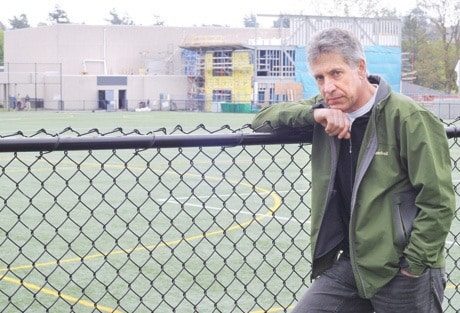Bill Sudds has no issue with his neighbour, Glenlyon Norfolk School.
He isn't bothered by the school's operations, half a block from his house on Somenos Street in the Gonzales neighbourhood. Nor does he object to its high fees or its independent-school mandate.
He just doesn't want his property tax dollars subsidizing it.
"Why should I, and people like me, why should we subsidize the wealthy?" he asked.
This year the City of Victoria will review its permissive tax exemption policy, which essentially covers not-for-profit organizations. The review seeks to establish eligibility criteria, and some people – Sudds included – hope Glenlyon gets removed from the list.
As an independent school, Glenlyon charges tuition and in B.C., private schools receive a per-student operating grant. The province also requires municipalities to waive property taxes on school buildings and the land they sit on.
That statutory exemption will see Glenlyon avoid paying approximately $128,390 in property tax for 2012.
Municipalities can also choose to waive property taxes on the rest of the school property. Victoria voluntarily exempts Glenlyon's fields, a break worth an estimated $55,654 this year.
The exemptions bother Sudds.
"When I look at my property taxes … they've been rising quite substantially," he said.
Glenlyon earns revenue, and like every business and every household, it should pay tax, he said.
Coun. Ben Isitt agrees.
"Glenlyon clearly has the ability to pay the tax bill," he said.
Attending Glenlyon for Grades 6 through 12 costs between $16,040 and $17,430 per year. The school's junior campus is located in Oak Bay. In 2011, the school posted a $986,631 surplus.
Simon Bruce-Lockhart, Glenlyon's head of school, points out that the institution is a registered charity.
"If there's any bottom line at the end of the year, that has to go back to the school so there's no profit involved," he said. "Not-for-profit educational institutions are certainly serving the public good, and the fact that people are paying fees for them doesn't destroy the fact that we're serving the public good."
Isitt, however, questions the public good.
"My view is we need to be concentrating our finite tax dollars on strengthening our public schools," he said.
He calls on the city to both eliminate Glenlyon's permissive tax exemption and to lobby the province to remove all subsidies to independent schools.
Coun. Marianne Alto argues it's a mistake to look at Glenlyon school in isolation. Decisions need to be based on policy, she added.
"Then you're in a position where you're not picking and choosing. I have favourite things I like to cut. The next person does, too, and that's not reasonable," she said.
Glenlyon's rental revenue
Some years ago, Glenlyon Norfolk School built an artificial turf field on adjacent properties it purchased for the purpose. The development did not come without community opposition at the time.
"That basically takes residential properties out of the tax base," said Martin Robbert, who lives two blocks from the school. "Victoria has a relatively small tax base as it is."
Another sticking point with some neighbours is that Glenlyon charges a rental fee for use of its turf field. It earns approximately $7,000 a year, mainly from the Bays United soccer club. The school is also in the process of building a new theatre and plans to charge for the use of that facility as well.
The fees are meant to cover costs associated with the rental, Bruce-Lockhart said.
"You're not really doing it to make a profit."
rholmen@vicnews.com
